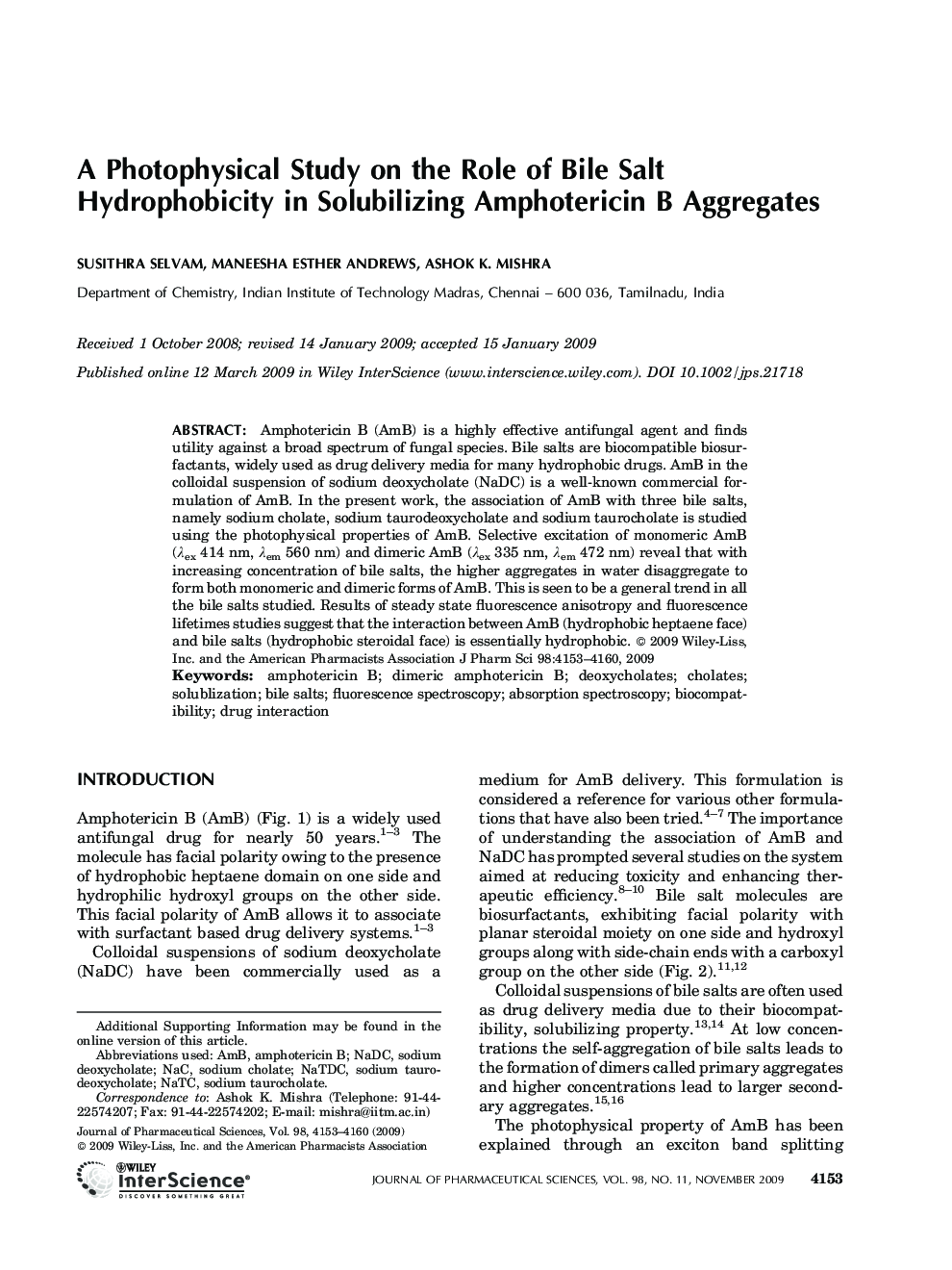| Article ID | Journal | Published Year | Pages | File Type |
|---|---|---|---|---|
| 2486948 | Journal of Pharmaceutical Sciences | 2009 | 8 Pages |
Abstract
Amphotericin B (AmB) is a highly effective antifungal agent and finds utility against a broad spectrum of fungal species. Bile salts are biocompatible biosurfactants, widely used as drug delivery media for many hydrophobic drugs. AmB in the colloidal suspension of sodium deoxycholate (NaDC) is a well-known commercial formulation of AmB. In the present work, the association of AmB with three bile salts, namely sodium cholate, sodium taurodeoxycholate and sodium taurocholate is studied using the photophysical properties of AmB. Selective excitation of monomeric AmB (λex 414 nm, λem 560 nm) and dimeric AmB (λex 335 nm, λem 472 nm) reveal that with increasing concentration of bile salts, the higher aggregates in water disaggregate to form both monomeric and dimeric forms of AmB. This is seen to be a general trend in all the bile salts studied. Results of steady state fluorescence anisotropy and fluorescence lifetimes studies suggest that the interaction between AmB (hydrophobic heptaene face) and bile salts (hydrophobic steroidal face) is essentially hydrophobic. © 2009 Wiley-Liss, Inc. and the American Pharmacists Association J Pharm Sci 98:4153-4160, 2009
Keywords
Related Topics
Health Sciences
Pharmacology, Toxicology and Pharmaceutical Science
Drug Discovery
Authors
Susithra Selvam, Maneesha Esther Andrews, Ashok K. Mishra,
